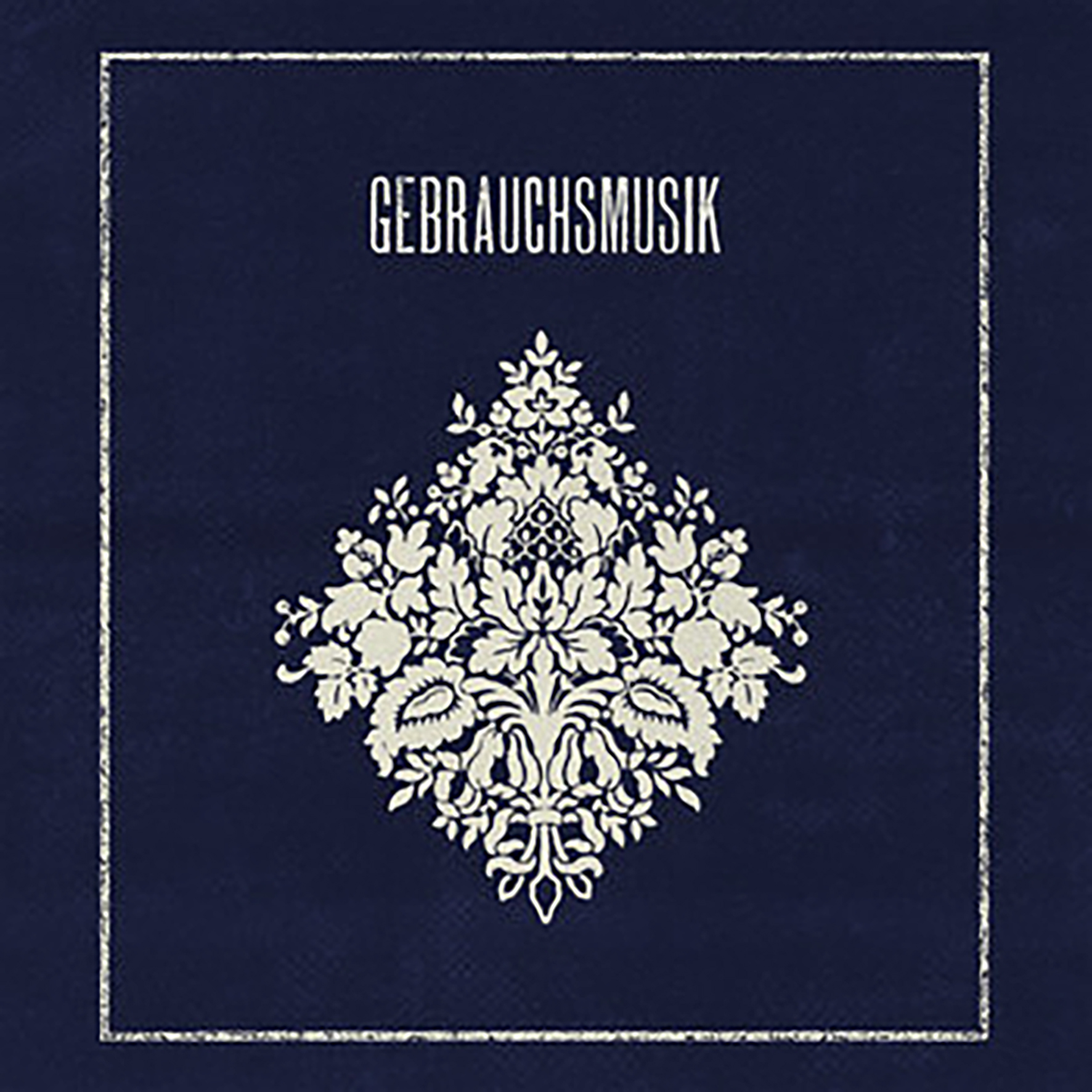
Like a lot of people, I am guilty of failing to properly appreciate Marcus Fjellström’s deeply unconventional and haunted vision during his lifetime, but Miasmah's Erik Skodvin has long been a tireless champion of the late Swedish composer's work, as the label was home to much of Fjellström work from the last decade. After hearing these reissues of Fjellström’s earliest two albums, I now fully understand why Skodvin was so passionate about his work: these two albums lie somewhere between a viscerally disturbing nightmare and a macabre fairy tale. I suppose that is not exactly surprising stylistic terrain within the Miasmah milieu, but the execution is what matters and Fjellström was on an entirely different plane than just about anybody else in that regard. At their best, these two albums make me feel like I am plunged into an intense and hallucinatory dreamscape filled with terrifying ballets, haunted clocks, and blood-soaked puppet shows.
Exercises in Estrangement was originally released back in 2005 on Manchester's Lampse label and it probably captures Fjellström at the peak of his dark intensity.Moreover, it is evidence that his vision was fully formed and bracingly original right from the start, though he certainly continued to evolve and explore more nuanced themes as his career progressed.At this stage, however, Fjellström's aesthetic could best be described as "an incredibly promising young classical composer witnessed some kind of mind-destroying Lovecraftian horror and was damned to forever experience viscerally disturbing visions every time he tried to close his eyes or sleep."Only part of that is actually based in reality (Fjellström studied at a Swedish conservatory and was an exceptionally gifted composer), but it is impossible to experience the sickly, pulsing dissonance of the opening "Planchette" without wondering what caused his vision to take such a disturbing and infernal path.
Part of that trajectory can admittedly be explained by some of his influences (Ligeti, Badalamenti, and Zdeněk Liška (frequent composer for macabre, surrealist animators like Jan Švankmajer and the Quay Brothers)), but when "Planchette" erupts into the massive, shuddering terror of its crescendo, it feels like Fjellström's true inspirations were far more dark and primal than a mere healthy interest in other radical composers.Thankfully, the rest of the album is not nearly as assaultive and nerve-jangling as its brilliant opener, but it is no less evocative and inspired.It is important to note that there is a streak of playful whimsy that runs through the album as well, though it is definitely more akin to that of the aforementioned Quay Brothers than the comparatively toothless goth-lite of a Tim Burton film (though Skodvin mentions that Fjellström delighted in gleefully mashing together high and low art and celebrating "bad" taste).
That mischievous tendency is best illustrated by "Marionettes Revisited," which sometimes evokes a gaggle of panicked elves reacting to a rash of reindeer mutilations at the North Pole.Beyond the indecipherable cacophony of those cartoonish voices, however, lies an incredibly sophisticated composition, as tumbling xylophone melodies, military snares, and darkly impressionistic piano motifs bleed together for an intoxicatingly nightmarish tableau.Later, "Kandinsky Kammer" dabbles again in the blurring of childlike wonder and discordant horror, as the opening motif approximates a haunted calliope at a deserted carnival.My other favorite pieces are the roiling, slow-building terror of "Jeux" and the lysergically viscous synth burble of "Anstice.""Jeux" is especially revelatory, as the howling climax is a such a masterful swirl of swelling discordant strings and clattering, confused sounds that I feel like I am being swept up in a fucking tornado.I am also quite fond of the considerably less extreme "Oil," which calls to mind a foreboding and subtly curdled variation on Debussy-style impressionism.
That piece is followed by a brief and surreal interlude of noirish jazz, which highlights yet another fascinating aspect of Exercises in Estrangement: it is akin to an infernal fun house in which each new door reveals a grotesque twist on a different genre, yet all feel like natural extensions of Fjellström's core vision.I never get the sense that Fjellström was self-consciously attempting to show off the sheer breadth of his artistry–it just feels like he seamlessly repurposed a wide variety of stylistic threads to paint different scenes within the same coherent overarching vision.While I am quite fond of that vision, Exercises in Estrangement would not nearly as good without its unerring and sometimes transcendent execution.In just about anyone else's hands, music in this vein would feel oppressive and bombastic, but Fjellström's lightness of touch and unerring intuition make the transitions from delicate melodies to roaring, seismic climaxes feel earned and organic.This is an absolutely amazing debut (and an amazing album in general).I just wish it had not taken me almost 15 years to finally hear it.
Samples can be found here.

On 2006’s amusingly titled Gebrauchsmusik, Fjellström took a somewhat different and more overtly conceptual approach, but the resultant music is no less harrowing, intense, and wildly original.The title translates as "utility music" and Fjellström sincerely set out to compose exactly that in his uniquely skewed and macabre way, writing a suite of pieces that he deemed appropriate for various activities like dancing, death, celebration, and war.Obviously, subjects like death and war lend themselves quite easily to the distended and sickly horror of Fjellström's aesthetic, but he was more than happy to invert ostensibly cheery occasions like festivals into hellish, dissonant miasmas as well.In Fjellström's vision, all roads inexorably lead to a phantasmagoric plunge into hell's depths.
The album's most unusual piece is arguably the opening "Reanimation Music," as it is a rare, explicit nod to one of Fjellström's influences (in this case, most likely György Ligeti’s "Lux Aeterna").In it, layers of vocals from an "enigmatic mezzosoprano" are dissonantly smeared together with strings and flutes into an unearthly reverie of unsettling and uncomfortable harmonies.None of the album's other pieces are at all similar, but I suppose that is simply because none of the other pieces are intended to soundtrack a reanimation.War, death, dance, and fairy tales, on the other hand, all have their own multi-part suites (though Fjellström assigns each piece a numbered "perspective").Those perspectives tend to be quite different from one another, however, so one war-themed piece does not necessarily resemble another war piece.That said, both the "1st Perspective" and the "3rd Perspective" of the war compositions resemble some kind of hellish and fiendishly complex Rube Goldberg contraption (or perhaps an unholy mash-up of several dozen broken music boxes and the innards of a demonically possessed clock tower).There is a significant difference in scope between them though, as the first movement is a clattering and clicking evocation of seething menace, while the final movement builds into a full-on shuddering hellscape of swirling, blurting dissonance.In between those two pieces, however, lies the very different "2nd Perspective," which is an understated and shivering soundscape that seems almost entirely crafted from breathily misused flutes.
Given how inventive and unpredictable Fjellström's perspective can be on any given theme, just about all of Gebrauchsmusik's ostensibly disparate threads eventually find their way into some viscerally disturbing and absorbingly hallucinatory territory.That said, the two fairy tale pieces are arguably the most consistently unique and fascinating, as both resemble the curdled harmonies of an infernal orchestra tuning their instruments mingled with crackling EVP recordings of an enigmatically distorted male voice.Elsewhere, "Dance Music, 2nd Perspective" sounds like a sickly, rickety, and eerily spectral reimagining of "Dance of the Sugar Plum Fairy."Amusingly, Fjellström's treatment of "Festivity" is even darker still, resembling a pitch-shifted and time-stretched cacophony of church bell tones bleeding together in ugly harmonies.
In classic showman fashion, however, Fjellström saves the most disturbing and gnarled piece for the album's grand finale.Though it is somewhat brief, "Death Music, 2nd Perspective" is incredibly effective, evoking a scorched and churning hellscape of damned souls that stretches out into infinity.That is a fittingly chilling ending for Fjellström's vividly-realized and richly textured nightmare, leaving behind a lingering uneasiness that is extremely well-earned.While I love Exercises in Estrangement, Gebrauchsmusik feels like a more complete and disturbingly realized vision, uncomfortably resembling a diabolical inversion of a Christmas pageant for children in which all audience members are reduced to emotionally scarred husks sitting in pools of their own urine by the time the final curtain closes.I am not sure who the target demographic for such an experience is (besides me, obviously), but I am sure that Marcus Fjellström was an absolutely brilliant composer for bringing such an intense, unearthly, and legitimately horrifying vision into the world.
Samples can be found here.
Read More

